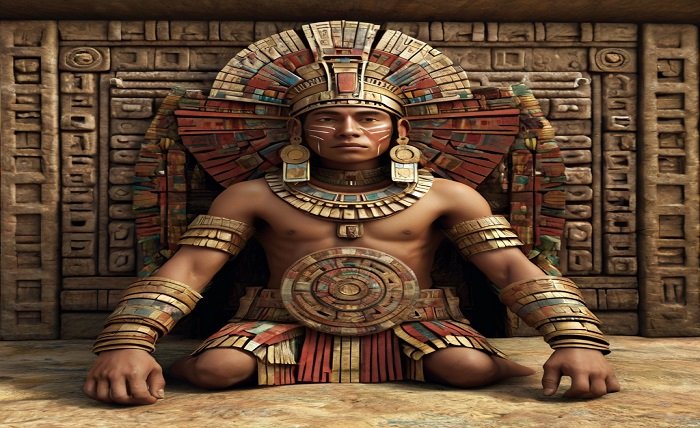Aztec Technology: The Aztec civilization, which flourished in central Mexico between the 14th and 16th centuries, is well-known for its remarkable technological achievements and rich cultural legacy. Even though they were an old society, the Aztecs created inventive answers to numerous problems in daily life, many of which have had a long-lasting influence on contemporary technology. This blog post explores the amazing technological advancements made by the Aztecs in astronomy, agriculture, medicine, and other fields.
Modern Agricultural Methods

The agricultural skills of the Aztecs were among their most impressive technological achievements. Chinampas, also called “floating gardens,” are a creation of the Aztecs that made it possible for them to grow crops on shallow lake beds. The Aztecs built these man-made islands by mounding mud, silt, and rotting vegetation to form rich fields suitable for the cultivation of important crops such as maize, beans, and squash. In addition to maximizing agricultural productivity, this approach guarantees sustainability and economical use of the resources at hand.
Aztec technology: Creative water management techniques
Aztec technology: Tenochtitlan, the Aztec capital, was located on a lake, making water management crucial to their way of life. They built a complex network of aqueducts, canals, and dikes to regulate water flow and provide the city with fresh water. For instance, the engineering marvel that carried fresh water from springs to Tenochtitlan was the Chapultepec Aqueduct. The Aztecs also constructed causeways and dikes to aid with transit and prevent flooding in the city.
Outstanding achievements in architecture
Aztec technology: Their buildings were a testament to Aztec mechanical prowess and aesthetic sensibility. They used locally obtained resources, such as the volcanic rock tezontle, to build magnificent temples, palaces, and pyramids. Tenochtitlan’s enormous pyramid temple, the Templo Mayor, was a prime example of their mastery of architecture. The Templo Mayor, dedicated to the gods Tlaloc and Huitzilopochtli, boasted several terraces adorned with intricate sculptures and vibrant colors.
Astronomical Accuracy and Schedules
The Aztecs were skilled astronomers who carefully observed celestial bodies to create extremely precise calendars. They kept track of time and scheduled religious ceremonies and agricultural work using a 365-day solar calendar (Xiuhpohualli) and a 260-day ritual calendar (Tonalpohualli). They were able to accurately forecast solar eclipses and other celestial occurrences thanks to their extensive knowledge of astronomy.
Modern medical procedures
Aztec medicine included surgical methods, herbal cures, and spiritual healing. They used a vast variety of plants for medical purposes; for example, they used the maguey plant to cure infections and wounds. Tikitl, the Aztec word for healers, was a skilled practitioner of surgery, antiseptic use, and setting fractured bones. Their all-encompassing medical philosophy placed a strong emphasis on striking a balance between spiritual and bodily health.
Advanced Writing and Documentation
To record their daily lives, history, and culture, the Aztecs developed a sophisticated writing system consisting of ideographs and pictographs. Codices, composed of deerskin or bark paper, contained extensive accounts of historical events, religious ceremonies, and lineages. These codices are important historical records that shed light on Aztec civilization and its technological prowess.
Making tools and metalworking
Despite not having access to iron or steel, the Aztecs were skilled at working with other metals, including copper, gold, and silver. They used these resources to make a wide range of implements, decorations, and weaponry. Aztec artisans created sophisticated and long-lasting objects using processes such as alloying, casting, and hammering. They further demonstrated their technological inventiveness by using obsidian, a volcanic glass, to create sharp tools and blades.
In summary
The Aztecs were a culture ahead of their time, with an amazing range of scientific advancements that solved environmental problems. The Aztecs left behind a rich legacy that still impacts contemporary culture, ranging from sophisticated farming methods and water management systems to architectural wonders and exact astronomy. By looking at their accomplishments, we can better appreciate this ancient civilization’s inventiveness and resourcefulness.
FAQ
Which agricultural innovations were the main contributions of the Aztecs? The chinampa method, which involves constructing lush, man-made islands on lake beds for crop cultivation, was the principal agricultural invention of the Aztec population.
How were the water resources of the Aztecs managed? Using a complex network of aqueducts, canals, and dikes, the Aztecs controlled their water resources. One such system was the well-known Chapultepec Aqueduct, which provided Tenochtitlan with fresh water.
What purpose did the Templo Mayor serve? Located in Tenochtitlan, the Templo Mayor was a magnificent pyramid temple devoted to the gods Tlaloc and Huitzilopochtli. In addition to being a center of religion and culture, it demonstrated the building prowess of the Aztecs.
